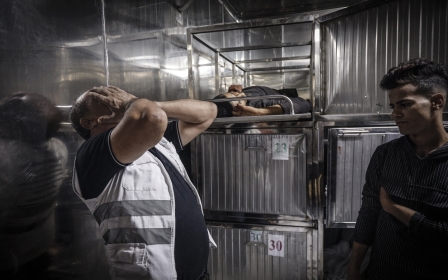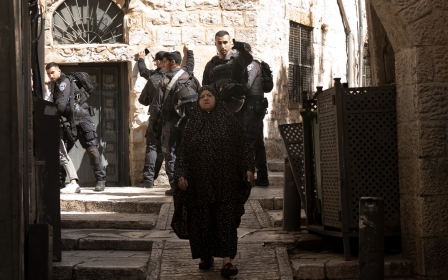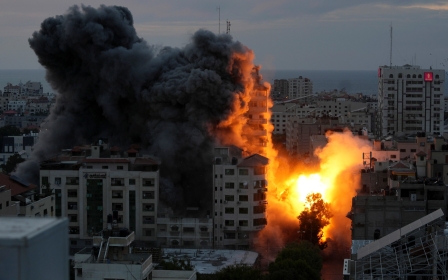When a Palestinian journalist crossed the Gaza frontier
At 6am on Saturday morning, Omar heard the sounds of an attack, got out of bed, and moved towards Gaza’s boundary with Israel.
Omar, whose name Middle East Eye is withholding for security reasons, has been a journalist since 2005. The sounds of Hamas rockets overheard were familiar. He was even severely wounded while covering Israel’s 2006 war on Gaza.
Yet there was something different about what was unfolding this time.
“A journalist friend and I drove towards the border and headed to the Erez crossing. It was open and a huge number of people were crossing through on foot, in cars, on motorcycles,” Omar recalls.
In the distance, Palestinian fighters were running towards Israeli communities.
New MEE newsletter: Jerusalem Dispatch
Sign up to get the latest insights and analysis on Israel-Palestine, alongside Turkey Unpacked and other MEE newsletters
Erez is the main crossing between the besieged Gaza Strip and Israel. Like the rest of the fence that separates the two, it’s heavily militarised and packed with surveillance equipment.
To many Palestinians that have ever had the fortune of being allowed to leave Gaza, Erez is familiar. It’s also the place through which day labourers cross into Israel for work.
Yet there was barely an Israeli soldier to be seen. “There were no Israeli defences.”
Omar was told that no Israelis could be found within 3km of the fence, and it was safe to leave Gaza and stroll into the flat lands of Israel in front of them.
“So people walked on and we walked with them. You can’t imagine the number of people who were entering,” he says.
Follow Middle East Eye's live coverage for the latest on the Israel-Palestine war
“As we were about to cross the road leading to Erez, we were targeted by air strikes as the Israelis attempted to cut off the way to the crossing. A group of civilians and journalists, including Nidal al-Wahidi, the founder of News Press, were in the area that was struck. Until now we do not know his fate or the fate of the young man who was with him,” Omar adds.
“I was a little behind, walking with some colleagues, and that’s what saved us.”
'We were in a state of amazement as we walked around, free, in our lands, outside the prison that is Gaza'
- Omar, journalist
Israeli fighter jets were trying to disperse the crowd heading through Erez. “But people didn’t care and kept on running towards the border. They didn’t care about anything.”
Once Omar had crossed into Israel, the lands of historic Palestine, he was overwhelmed with emotion.
“I felt joy and started crying. People began to cry and prostrate because they had entered the land that they were displaced from in 1948. We were in a state of amazement as we walked around, free, in our lands, outside the prison that is Gaza.”
“I feel that people’s happiness came from entering these lands even if they were going to die. Most of the people are refugees from Ashkelon, Beersheba, and I myself am originally from Jaffa,” he added.
As Omar walked, he passed many dead fighters. “I photographed them.”
Then he began to see Israeli captives being brought to Gaza on the back of motorcycles and in cars. It’s thought dozens of Israelis are now being held across the Gaza Strip.
Today, fighting is still raging in several Israeli communities near Gaza. At least 700 Israelis have been confirmed killed in the attack, and as Israel’s military pummels residential areas of the Gaza Strip in retribution, the Palestinian death toll has climbed to 370.
Omar and his family have been twice displaced by the bombing over the past 24 hours.
This article is available in French on Middle East Eye French edition.
Middle East Eye delivers independent and unrivalled coverage and analysis of the Middle East, North Africa and beyond. To learn more about republishing this content and the associated fees, please fill out this form. More about MEE can be found here.




